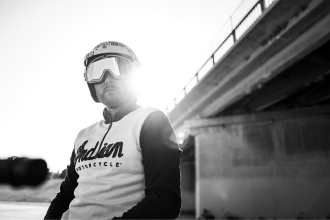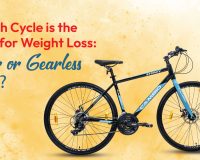With a wide variety of cycles available nowadays, buying the proper cycle comes with its fair share of problems. You can choose between road cycles, hybrid, or MTB bikes. The quest to conquer the mountains and enjoy the unpaved terrains. Enthusiasts and laymen combined are opting for mountain bikes.
In addition, mountain biking as a sport enjoys a tremendous fan following. Not only riding mountain bikes allows you to connect with nature, but it also allows you to escape the urban hustle. The promise of off-road exploration, adventure on diverse terrains, and opportunities to develop advanced riding skills and control makes it a no-brainer.
However, the inherent risks associated with mountain biking underscore the paramount importance of selecting the appropriate MTB bike. The safety aspect holds true when you buy cycles online or offline. But the magnitude of attention gets multifold in the case of MTB bikes. Steep ascents, treacherous descents, and rocky paths require a robust bike to inspire confidence on such terrain.
Hence, whether you buy a cycle online or offline for mountain riding, the following factors will ensure your investment aligns seamlessly with your aspirations and paves the way for countless exhilarating rides ahead.
Rider Height:
Regarding choosing the proper size, rider height is the most crucial consideration. A mountain bike sizing chart is the ideal place to start. Check out our handy sizing chart above, or visit a manufacturer’s website for model-specific charts.
However, there are situations when a single data point, such as rider height, cannot give all the answers. There are further metrics to consider if you have to choose between the recommended chart sizes or want to confirm that your fit is ideal:
| Rider Height (feet/inches) | MTB Frame Size (inches) |
| 4’10” – 5’2″ | 13 – 14 |
| 5’2″ – 5’6″ | 15 – 16 |
| 5’6″ – 5’10” | 17 – 18 |
| 6’1″ – 6’4″ | 21 – 22 |
| 6’4″ and above | 23 and above |
Remember that this chart provides a general starting point. Factors like your inseam length, riding style, and personal comfort preferences influence the correct size.
Wheel Size:
The three most common wheel sizes for mountain bikes are 26″, 27.5″, and 29″. You can focus your search and find the ideal bike to meet your demands by selecting the appropriate wheel size.
The cycling community has adopted wider wheels because of their enhanced traction and capacity to roll over obstacles, whereas the previous standard for mountain bikes was 26″. Larger wheels can maintain higher speeds on uneven terrain and roll over obstacles faster than smaller wheels.
29″ wheels are nearly universally used on fast downhill bikes. Larger contact patches on large wheels indicate that more rubber contacts the ground, increasing traction. However, bigger is not necessarily better. Those that ride nimble should use the medium 27.5”-wheel size.
Although certain brands use smaller wheels on their XS or S frames, most models use the same wheel size across all available frame variants. All adults should use large 29″ wheels; however, smaller riders can find themselves less at home.
Can Read More:
- 8 Useful Benefits of Mountain Biking
- 7 Benefits of Cycling in the Rain
- Mountain Bike Training Plan
- Mountain Biking Must Adventure in 2024
- Mountain Bike Riding’s Benefits
Frame Geometry:
A mountain bike’s overall geometry and shape comprise numerous precise metrics in addition to the frame’s size. Reach and wheelbase are the most crucial dimensions to consider when discussing size.
The horizontal distance between the bottom bracket & the head tube’s center is the reach of a mountain bike frame. Basically, it indicates the amount of space between the rider’s feet and hands on the bike and the rider’s range of motion while pedaling. It determines your riding position and how far you lean over the bike’s handlebars. An appropriate reach ensures comfort, stability, and optimal weight distribution.
The mountain bike wheelbase is the horizontal distance which separates the front and back axles. Wheel spacing is crucial in determining whether a bike is more stable or nimble.
A longer wheelbase is more stable and is easier to control at high speeds, useful for steep descents or fast trails. Shorter wheelbases mean the bike is more compact and will be more maneuverable on technical terrain and around tricky obstacles.
Final Words
Essential factors like height, the bike’s wheel size, frame design, riding style and skill level play an important role when buying a cycle online. Combining these elements creates a bike that fits you perfectly and suits your preferences.
Mountain biking is an exhilarating sport, and Cambio Bikes is your ideal riding partner, which caters to cyclists of different needs and experience levels. So, whether you’re a beginner or a seasoned rider, finding the proper MTB cycle that complements your unique qualities leads to thrilling and enjoyable outdoor adventures.







